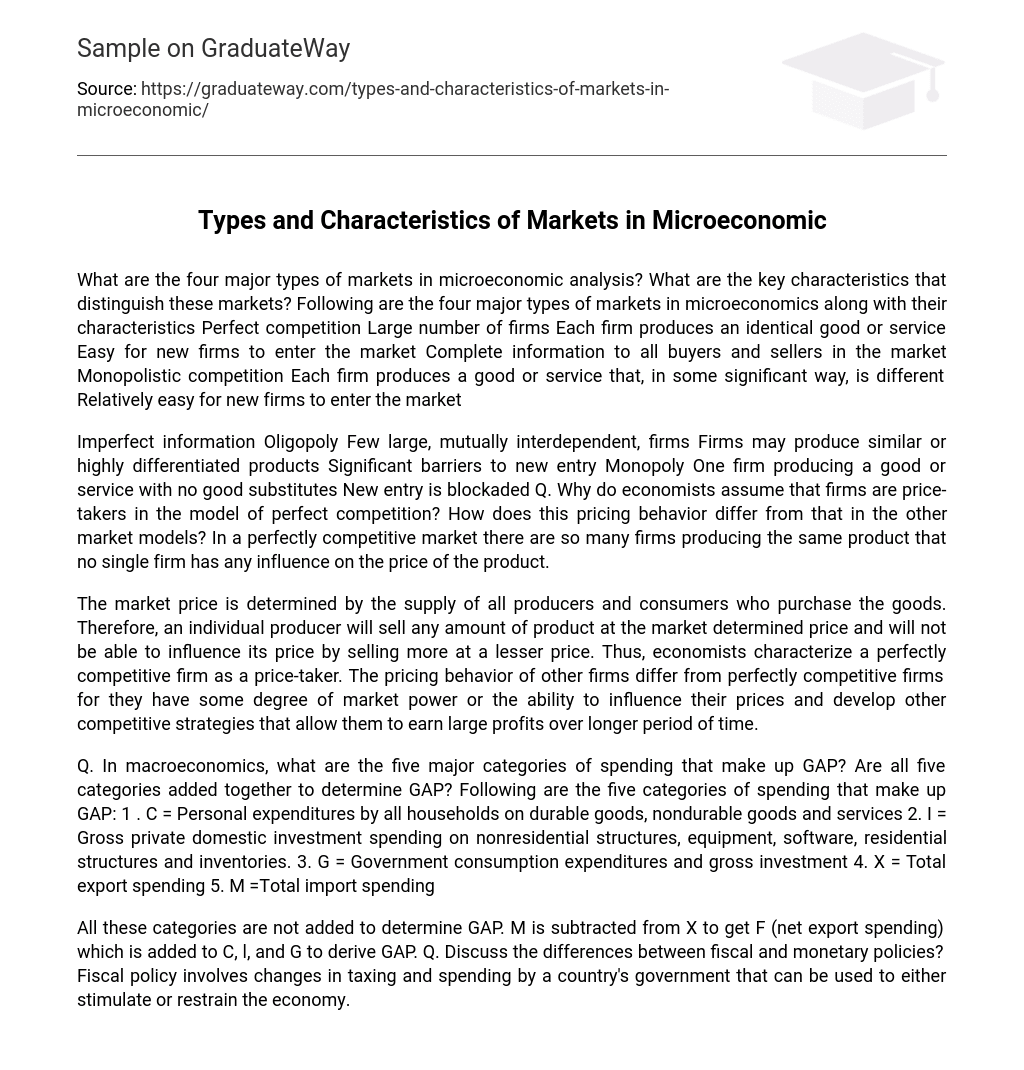What are the four major types of markets in microeconomic analysis? What are the key characteristics that distinguish these markets? Following are the four major types of markets in microeconomics along with their characteristics Perfect competition Large number of firms Each firm produces an identical good or service Easy for new firms to enter the market Complete information to all buyers and sellers in the market Monopolistic competition Each firm produces a good or service that, in some significant way, is different Relatively easy for new firms to enter the market
Imperfect information Oligopoly Few large, mutually interdependent, firms Firms may produce similar or highly differentiated products Significant barriers to new entry Monopoly One firm producing a good or service with no good substitutes New entry is blockaded Q. Why do economists assume that firms are price-takers in the model of perfect competition? How does this pricing behavior differ from that in the other market models? In a perfectly competitive market there are so many firms producing the same product that no single firm has any influence on the price of the product.
The market price is determined by the supply of all producers and consumers who purchase the goods. Therefore, an individual producer will sell any amount of product at the market determined price and will not be able to influence its price by selling more at a lesser price. Thus, economists characterize a perfectly competitive firm as a price-taker. The pricing behavior of other firms differ from perfectly competitive firms for they have some degree of market power or the ability to influence their prices and develop other competitive strategies that allow them to earn large profits over longer period of time.
Q. In macroeconomics, what are the five major categories of spending that make up GAP? Are all five categories added together to determine GAP? Following are the five categories of spending that make up GAP: 1 . C = Personal expenditures by all households on durable goods, nondurable goods and services 2. I = Gross private domestic investment spending on nonresidential structures, equipment, software, residential structures and inventories. 3. G = Government consumption expenditures and gross investment 4. X = Total export spending 5. M =Total import spending
All these categories are not added to determine GAP. M is subtracted from X to get F (net export spending) which is added to C, l, and G to derive GAP. Q. Discuss the differences between fiscal and monetary policies? Fiscal policy involves changes in taxing and spending by a country’s government that can be used to either stimulate or restrain the economy.





